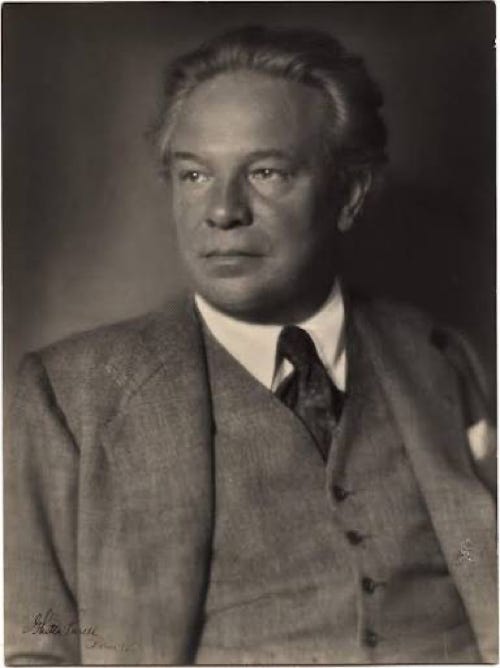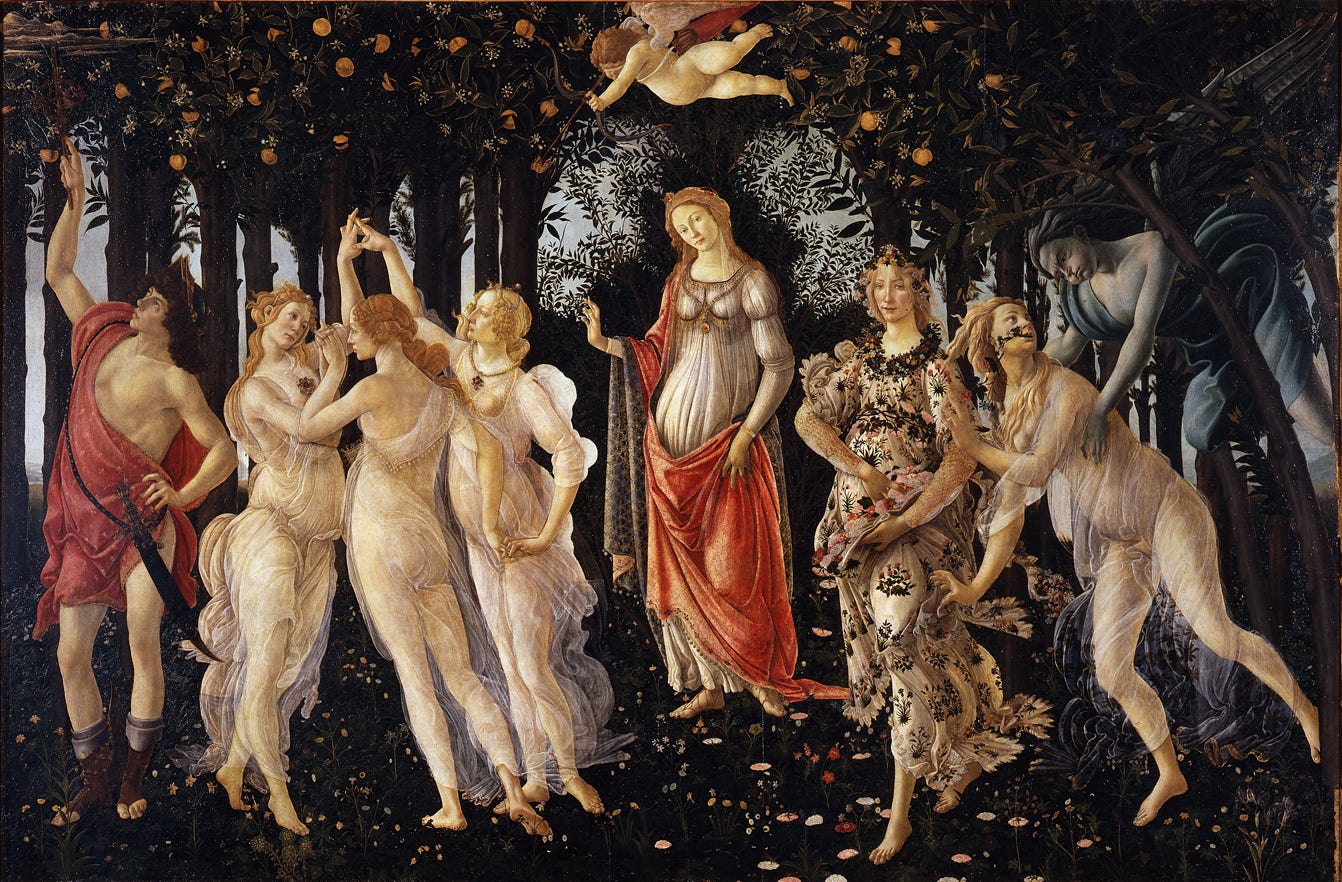
A Video Guide to the Music of Respighi
BACKGROUND
Offered here is a tantalizing taste of the works and career trajectory of Respighi, from his very first major orchestral work up through his very last orchestral work. This spans a 34-year composing career (Respighi died at the relatively young age of 56).
A thread that you will find throughout his works is the dichotomy between progressive, very large-scale works and his love for and interest in the works of the Baroque and Renaissance periods, which infuse much of his music and call for smaller ensembles.
Preludio, Corale e Fuga for Orchestra (1901)
This intriguing work is the very first major orchestral composition by the composer, completed in 1901 under the guidance of his teacher Rimsky-Korsakov. It was first performed in June 1901 as part of his exam at the Liceo Musicale’s advanced course in composition. Giuseppe Martucci, Director of the Liceo, said the following upon Respighi receiving his diploma: “Respighi is not a pupil, Respighi is a master”. The work already shows Respihgi’s mastery in orchestration and coloristic writing. It is very rarely performed.
Arkhangelsk
Suite in G Major for String Orchestra and Organ (1905)
Composed in 1905, Respighi's Suite in G Major for strings and organ is a dazzling early work that bursts with neo-Baroque charm. Paying homage to legends like J.S. Bach, Girolamo Frescobaldi, and Arcangelo Corelli, the piece channels the spirit of the Baroque concerto grosso. Here, the organ takes center stage as a virtuosic solo instrument, while the strings create a rich, enveloping backdrop, inviting listeners into an enchanting musical dialogue. This is the first of many works by Respighi that look back to earlier musical periods, such as Ancient Airs and Dances, Gli uccelli (The Birds) and others.
Fountains of Rome Mvt. 2 “La fontana del Tritone al mattino” (1916)
Fountains of Rome, or Fontane di Roma in Italian, is the first of the three tone poems Respighi composed about Rome, and was completed in 1916. On March 11, 1917, the piece made its debut at Teatro Augusteo with Antonio Guarnieri leading the Augusteo Orchestra. Although Respighi was initially disheartened by the lukewarm response and shelved the score, a remarkable turnaround occurred when Arturo Toscanini revived the work in February 1918. This electrifying performance captured the public’s imagination and catapulted Respighi to international acclaim. Of the second section heard here, the Baltimore Sun reported in a 1920 performance that “it is like some joyous appeal at whose sound naiads and Tritons come trooping up, pursuing each other and mingling in a wild dance beneath the falling spray.”
Sonata for Violin and Piano (1917)
It should come as no surprise that Respighi, who was a trained professional violinist, would compose works for the violin. In fact, Respighi wrote three violin concertos and two violin sonatas. Heard here is the second of his two violin sonatas: the Violin Sonata in B Minor, composed in 1917. It is an intense work, performed magnificently by Leonidas Kavakos and Yuja Wang. Respighi did write important works other than orchestral showpieces! :)
Church Windows, mvt 2: San Michele Arcangelo (1926)
Although Ottorino Respighi is most famous for his Roman symphonic poem trilogy—Fountains of Rome (1916), Pines of Rome (1924), and Roman Festivals (1928)—his Church Windows (1926) stands as an equally cherished work. Originally conceived in the summer of 1919 as a piano piece titled Three Preludes on Gregorian Melodies, the composition was inspired by Gregorian chant passages shared by his new wife, mezzo-soprano Elsa Olivieri-Sangiacomo. In her memoirs, Elsa described the work as capturing both the joyful wonder of revelation and the mystic exultation of deep religious feeling. There isn’t a single, identifiable church window that Respighi based the second movement on. In fact, the titles for the movements of Church Windows were assigned after he had completed the music, intended to evoke the spirit and imagery of stained‐glass windows rather than to depict a specific one. Respighi’s second movement—titled “St. Michael the Archangel”—draws on dramatic, religious imagery inspired by the battle in Heaven from Revelation and his fascination with Gregorian chant, rather than on an actual window at a particular church. Thus, while his work powerfully conjures the impression of church windows in Italy, no concrete location has been pinpointed as its source.
Trittico Botticelliana: La Primavera (1927)
The two orchestral aspects of Respighi include his best-known compositions: on the one hand the epic (one might say bombastically colorful) tone poems of the “Roman Trilogy,” comprising Fountains of Rome, Pines of Rome, and Roman Festivals, all for gigantic orchestra. The other side comprises his charming arrangements for smaller orchestral ensembles of melodies by composers of the 17th and early-18th centuries, the three Suites of Ancient Airs and Dances and The Birds, as well as the Botticelli Triptych of original material. The Trittico is an evocation of three celebrated paintings by Sandro Botticelli (born Alessandro di Mariano di Vanni Filipepi in Florence, c. 1445, died 1510) that today hang in Florence’s Uffizzi Gallery.

Sandro Botticelli: La Primavera (late 1470s or early 1480s)
Ancient Airs and Dances, Suite 3 mvt. 1—Italiana (1931)
As mentioned above, Ottorino Respighi’s musical identity was defined by a striking duality. On one hand, he boldly embraced modernity—crafting a unique sound full of vibrant, technicolor hues. On the other, he nurtured a deep reverence for the past, immersing himself in the music of bygone eras. These seemingly contrasting impulses beautifully converged in his work. When Respighi transcribed and arranged scores from the 16th to 18th centuries, he reinterpreted them through his own creative lens, infusing intimate, historical textures with bright, contemporary colors. In his thirties, he found particular inspiration in the delicate sounds of 16th- and 17th-century lute compositions—a sound so gentle it felt like overhearing a private conversation. From these enchanting works, he fashioned three suites for string orchestra, aptly naming them Ancient Airs and Dances. Respighi composed the Suite No. 3 in 1931 for string orchestra. His orchestration brings a modern cast to the old melodies, but unlike many modern arrangers of older music, he does not tamper with the original harmonies. The first movement of Suite No. 3, heard here and marked Andantino, is based on an anonymous Italian popular melody of the early 17th century.
“Orgiastic Dance” from Belkis, Queen of Sheba (1934)
Respighi’s Belkis, Queen of Sheba Suite is the last orchestral work the composer completed in his life. The music unfolds as a vibrant tapestry of exotic color and mystical allure. Extracted from his ballet Belkis, Regina di Saba, the suite distills the dramatic narrative of the ancient queen’s legendary journey. Respighi’s characteristic orchestration captures shimmering textures, rhythmic vitality, and a sumptuous harmonic palette that evoke the splendor of a distant, enigmatic realm. The music weaves moments of stately majesty with bursts of energetic, evocative imagery, inviting listeners into a world of ancient myth and transcendent beauty. Each movement offers a refined interplay of lyrical melodies and intricate textures, celebrating both the timeless charm and dramatic grandeur of its storied subject. In this masterful work, Respighi invites listeners to explore opulent, timeless mystery. The music has a distinct Middle-Eastern quality and a fabulous solo for Eb Clarinet!